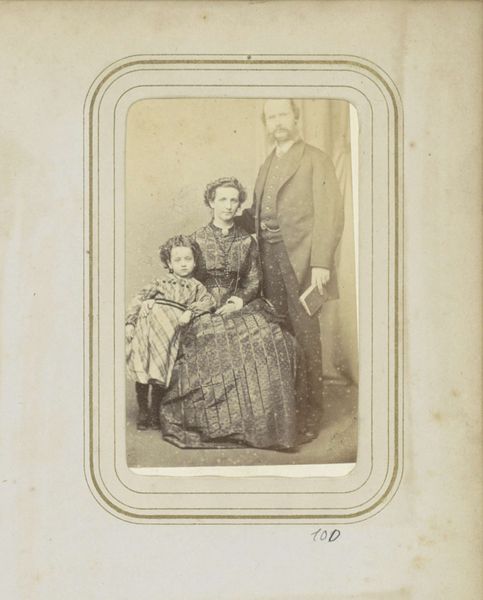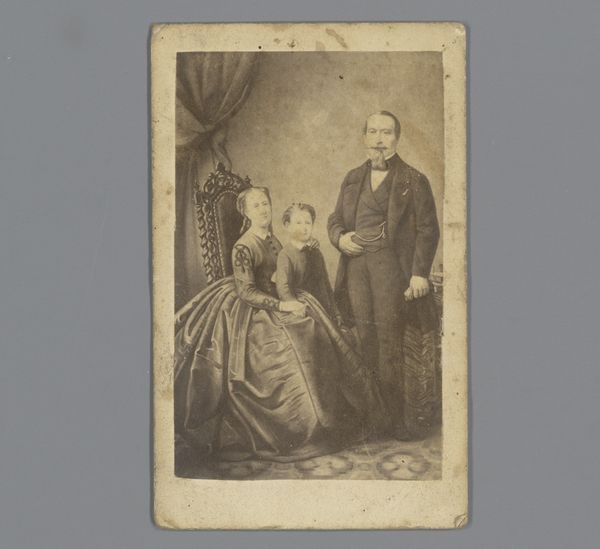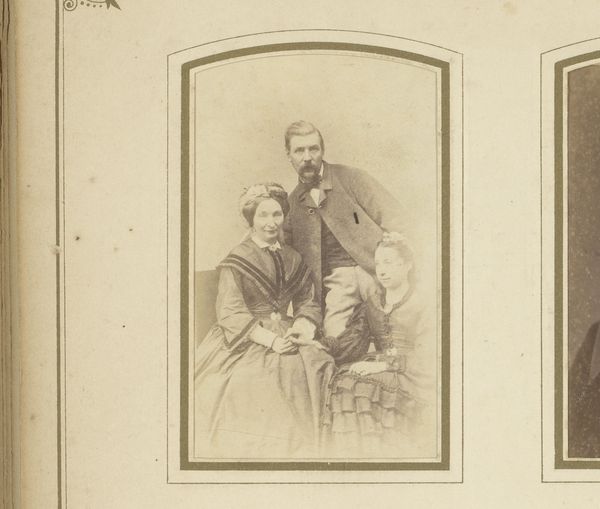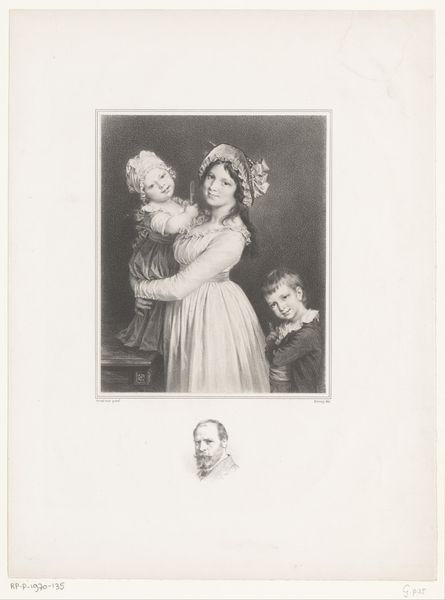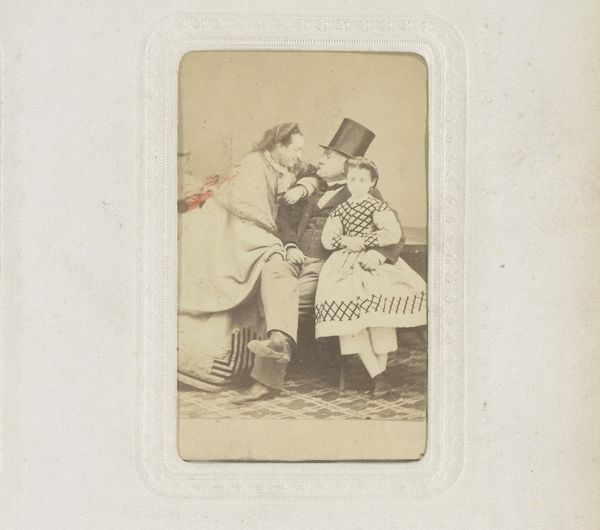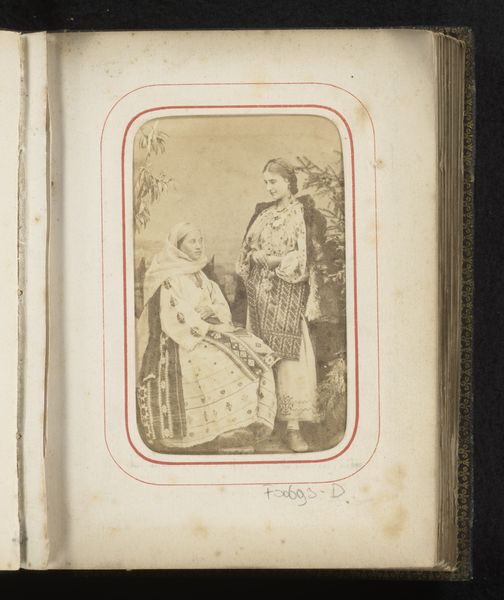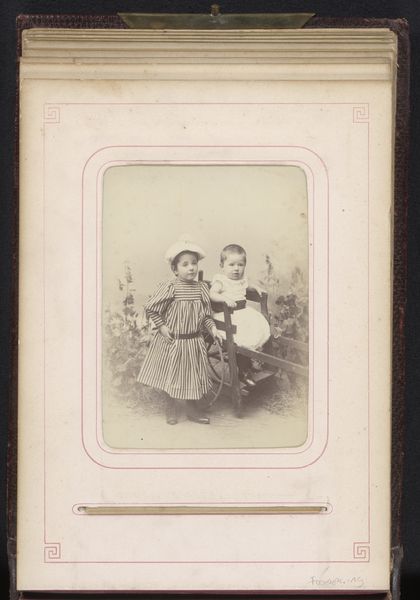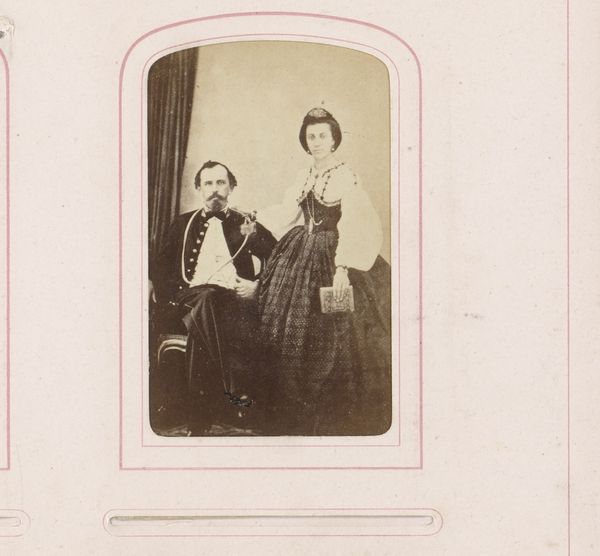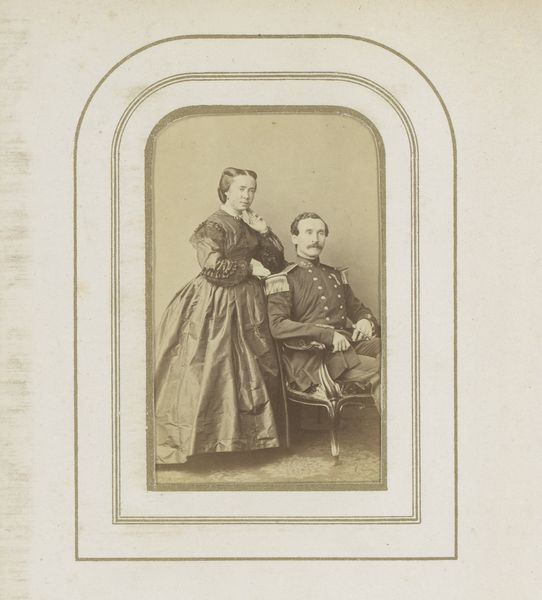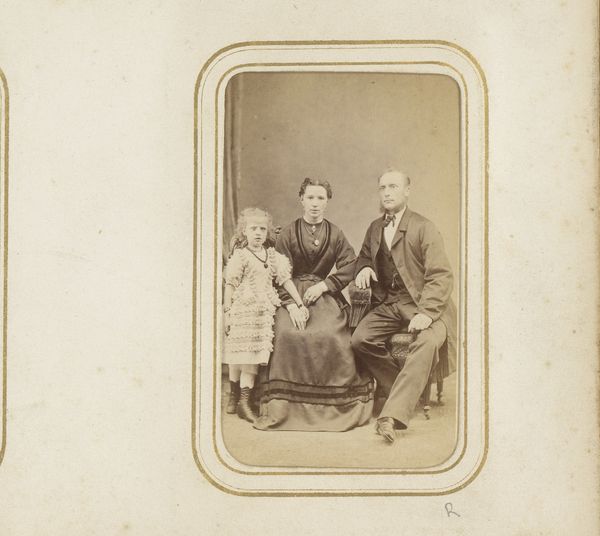
print, daguerreotype, photography
#
portrait
# print
#
daguerreotype
#
photography
#
group-portraits
#
genre-painting
#
realism
Dimensions: 7.7 × 5.5 cm (image/paper); 10.4 × 6.2 cm (mount)
Copyright: Public Domain
Curator: What a fascinating piece! We’re looking at an untitled daguerreotype, a type of early photograph, dating back to the 1860s. The piece resides here at The Art Institute of Chicago. Editor: My initial thought is how remarkably still and somber everyone appears. The grayscale really contributes to that weighty atmosphere. Curator: Absolutely. The daguerreotype process required long exposure times, essentially freezing the subjects in a rigid pose. Look at the detail in the clothing; this speaks to a certain level of affluence. You see a man, woman, and a child, possibly a family portrait, with careful attention given to costume and composition. What can we tell about the mode of production here, do you think? Editor: Certainly, there’s evidence of class stratification. From a formalist lens, the soft lighting is intentional, obscuring details yet retaining sharp definition to capture form. This was very skilled work; consider how much labor went into creating a single image. The subjects are positioned in what looks like a staged setting with visible signs of wear on what is certainly manufactured backdrop scenery. Curator: A photograph like this was certainly an event, accessible only to certain classes. Photography, still in its relative infancy, presented both new opportunities and labor realities in its production. Each step of this artwork signifies access to privilege, starting from its patrons to those operating the camera. We must reflect on this while examining such portraits of families and children. Editor: From my viewpoint, these photographic elements of form and lighting achieve more than social statements; together they evoke the essence of being at that historical moment, even if filtered through wealth. It captures and makes a reality accessible to anyone, even now. I see this form creating value in representation. Curator: That's a poignant observation. Photography can transcend a historical lens and reach deeper truths and emotional accessibility through form and content for the observer, across decades of transformation. Editor: A very profound example of how materials and meanings coalesce!
Comments
No comments
Be the first to comment and join the conversation on the ultimate creative platform.
